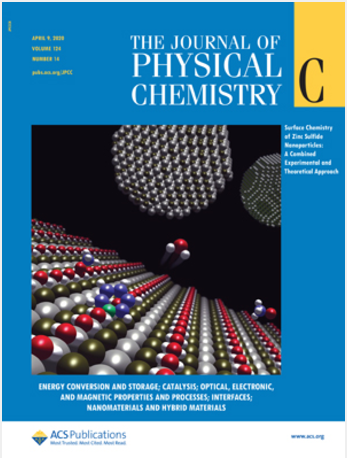石墨炔中的单轴拉伸诱导相变
IF 3.3
3区 化学
Q2 CHEMISTRY, PHYSICAL
引用次数: 0
摘要
材料科学领域重点研究二维(2D)材料,尤其是石墨烯(GR)及其各种同素异形体,如石墨炔(GYs)。在这项工作中,我们通过分子动力学模拟探索了在有限温度下单轴负载对石墨烯结构的影响,从而发现了在特定温度下出现的新相。我们在 α- 和 [14, 14, 18]-GYs 中发现了三种新相,并将其命名为 C16-GY、C14-GY 和 C12-GR。这些相具有在很宽的温度范围(T ≤ 4 和 300 K ≤ T ≤ 600 K)内保持稳定的显著特性。此外,我们还对这些新发现相的机械特性进行了广泛的研究。通过在有限温度下使用经验势进行分子动力学模拟,我们对这些材料在不同温度条件下的行为获得了宝贵的见解。我们的研究结果表明,在室温(300 K)下,与 α- 和 [14, 14, 18]-GYs 的杨氏模量(分别为 46.63 和 43.98 N/m)相比,C16-、C14-GYs 在 x 方向上表现出较高的杨氏模量(分别为 58.85 和 65.88 N/m)。此外,这些新相的机械性能超过了磷烯、锗烯、硅烯和链烷烯。重要的是,它们的机械稳定性和动态稳定性都得到了肯定。因此,这些材料有望应用于各种机械领域。本文章由计算机程序翻译,如有差异,请以英文原文为准。

Uniaxial Tensile-Induced Phase Transition in Graphynes
The field of materials science has a strong focus on the study of two-dimensional (2D) materials, with particular emphasis on graphene (GR) and its various allotropes such as graphynes (GYs). In this work, we explored through molecular dynamics simulations at finite temperatures the effects of uniaxial loading on GY structures, which led to new phases that arise at specific temperatures. We identified three new phases in α- and [14, 14, 18]-GYs, which we named C16-GY, C14-GY, and C12-GR. These phases have the remarkable property of remaining stable in a wide range of temperatures (T ≤ 4 and 300 K ≤ T ≤ 600 K). Moreover, we have conducted extensive investigations into the mechanical properties of these newly discovered phases. Through molecular dynamics simulations at finite temperatures, using empirical potential, we have gained valuable insights into how these materials behave under different temperature conditions. Our results reveal that at room temperature (300 K), C16-, C14-GYs exhibit high Young moduli in the x-direction (58.85 and 65.88 N/m) compared to α- and [14, 14, 18]-GYs (46.63 and 43.98 N/m), respectively. Additionally, these new phases exhibit mechanical properties that exceed those of phosphorene, germanene, silicene, and stanene. Importantly, both their mechanical and dynamic stability have been positively confirmed. As a result, these materials are promising candidates for various mechanical applications.
求助全文
通过发布文献求助,成功后即可免费获取论文全文。
去求助
来源期刊

The Journal of Physical Chemistry C
化学-材料科学:综合
CiteScore
6.50
自引率
8.10%
发文量
2047
审稿时长
1.8 months
期刊介绍:
The Journal of Physical Chemistry A/B/C is devoted to reporting new and original experimental and theoretical basic research of interest to physical chemists, biophysical chemists, and chemical physicists.
 求助内容:
求助内容: 应助结果提醒方式:
应助结果提醒方式:


